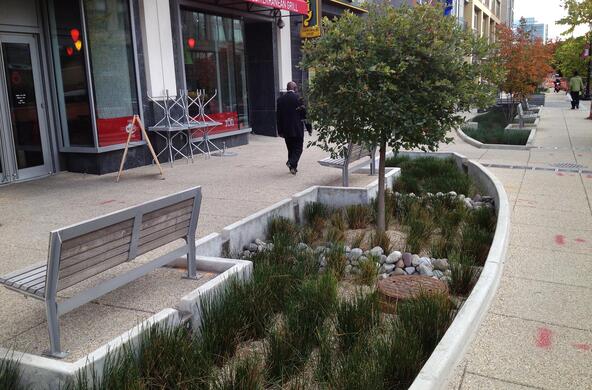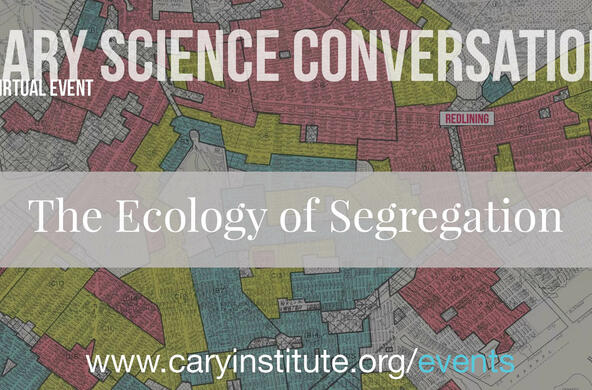A reckoning is emerging as scholars advance the projects of justice and equity within ecology and environmental studies. Academics and activists are naming the complex legacies of harm perpetrated by discriminatory policies, resource extraction in the name of economic growth, and racialized disinvestment. Alongside documenting these legacies, it is necessary to explore how the tools used within the environmental disciplines are implicated in this history.
To quote Audre Lorde, “the master’s tools will never dismantle the master’s house.” These words weigh heavy as we consider strategies that address the environmental, economic, and social inequities built into cities. Positioning Lorde’s invocation in the spirit of this roundtable – what if building the anti-racist city requires the abolition of environmental management as we know it?
An example from Baltimore’s history illustrates how the tools that support environmental management can simultaneously be used to curtail the project of social justice.
During the “freeway revolts” of the 1970s, lawsuits were a frequently utilized tactic to stop or delay the construction of urban interstates. The most successful cases challenged highway development through established parkland. These lawsuits followed the precedent set by the Supreme Court in Citizens to Preserve Overton Park v. Volpe in 1971. This decision stated that “protection of parkland was to be given paramount importance” in road placement.
The privileged status of parkland simultaneously devalued residential land in highway routing decisions. In the case of Baltimore, the decision in Overton Park pitted activists concerned with preserving their homes, businesses, and local communities against the Sierra Club-sponsored VOLPE (Volunteers Opposing the Leakin Park Expressway). This division hindered the already tenuous attempts to develop a cross-neighborhood—and thereby a multi-racial—coalition opposed to the whole highway project.
Lawyers for VOLPE were successful in getting a temporary injunction against the route through Leakin Park. The lawsuit relied on the new tools afforded to them through the Overton Park case and coincident policy changes. These tools, including the National Environmental Policy Act (NEPA), required public hearings, and environmental impact statements (EIS), were not useful to groups looking to preserve their homes and continue to live within the city.
Judges hearing a lawsuit brought by the larger coalition of Baltimore highway activists—a group called MAD—ruled against the case on all counts. While MAD’s lawyer used arguments successful in the Overton Park and Leakin Park cases, the judges found that the public hearings and impact statement for the majority-Black and impoverished Franklin-Mulberry corridor in west Baltimore were adequate and did not necessitate additional environmental study. Since demolition in the corridor took place prior to any environmental study, the judges found that the site was already determined to be suitable for route placement. This ruling was made in spite of the long history of racialized dispossession and disinvestment that occurred in the corridor prior to the emergence of strengthened environmental protections.
While MAD’s case lost on procedural grounds, the tools afforded through environmental policy were an ill-fit definitionally as well. As the judges noted, injunctions should only be issued when projects are “to prevent continuing work in areas that have already been changed in an environmental sense.” They cite clear cutting forests or dam building activities as examples of environmental alteration — signaling a clear distinction between what we might now refer to as natural and built environments.
The consequences of these inequitable legal and political tools are visible in Baltimore’s landscape. The “highway to nowhere” divides west Baltimore while vacant row homes overlook the sunken, partially constructed interstate. Leakin Park sits just a few miles away, relatively undisturbed.
As we plot out the path towards the anti-racist city, we must simultaneously amend the practices and procedures that have burdened others. Importantly, we must begin to see the tools of our professions as enmeshed within multiple systems and structures. What we understand as a best practice to achieve environmental preservation may also result in the worst possible outcome for a neighborhood, a resident, or a community.
Change requires not only peeking outside of our disciplinary silos, but also challenging our notions of what natures, environments, and beings ought to be preserved, nurtured, and maintained.
The project of the anti-racist city requires a heterogeneous set of tools. We must design these tools to serve and address the environmental problems communities deem most pressing. Developing this new toolkit necessitates the end of universal and top-down approaches to environmental management. Our task is one of humility. In this relinquishment is the kernel of liberation, an opportunity to remake our practices to address the problems and desires of those most in need.





